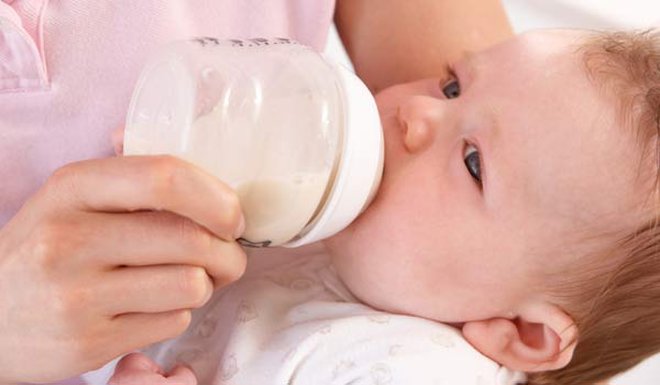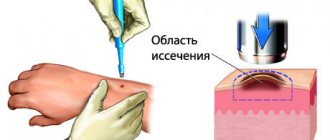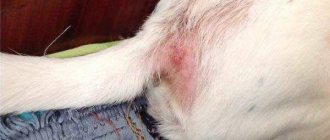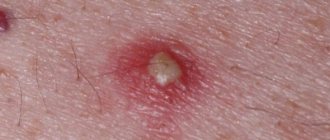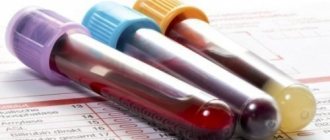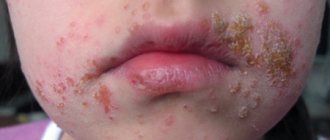Allergies in children can manifest themselves in different ways. At 2–3 months of life, the baby sometimes experiences redness of the skin. Increasing volumes of lesions, swelling and the bright red color of these places may indicate that the child has an allergic diathesis - doctors call it “neurodermatitis” and “atopic dermatitis”.
There is a high probability that this disease will not go away on its own, and you need to see a doctor as soon as possible. Otherwise, the redness may progress to a second, more severe stage, which is accompanied by itching and causes severe discomfort to the child.
Be careful!
The first symptoms of atopic dermatitis in children are usually diaper rash. Redness appears in the folds of the skin, under the armpits, on the buttocks, and behind the ears, which sometimes turn into wet sores. The skin on the cheeks becomes flaky and rough. Milky crusts form on the scalp and eyebrows. Usually, starting on the face, irritation spreads to the body.
These signs usually appear in the 2nd–3rd month of a child’s life and intensify by the second half of the year. But there may also be a later development of the disease - at the age of 1 year to 3-4 years.
Symptoms
Nonspecific symptoms
There is a list of nonspecific signs characteristic of all types of diathesis:
- Redness and peeling of the cheeks;
- Rhinitis, runny nose;
- Increased sweating in skin folds, flexure areas, buttocks, neck;
- Skin lesions in the elbows, knees, and buttocks. It becomes red and may peel off. Inflammation of the mucous membranes is possible;
- Formation of blisters in areas of redness;
- Unpleasant sensations in the form of itching. The child scratches problem areas, creating abrasions;
- Seborrhea. Inflammation of the hairy areas of the skin on the child’s head occurs. Manifested by the formation of scales;
- Diaper rash that is difficult or impossible to get rid of, taking into account hygiene recommendations.
These symptoms should make parents wary and let them know that they urgently need to visit a doctor.
Specific symptoms
Allergic diathesis on the hands is characterized by:
- The limb turns red at the points of contact between the child and the allergen.
- By analyzing the connection between the child and his environment, the source of the problem can be pinpointed;
- Constant sweating of the child;
- Severe itching, causing a lot of discomfort. The child does not sleep well and is constantly itching;
- Constant regurgitation of food;
- Loss of appetite.
It is worth noting! Diathesis on the legs is possible in the same way as on the arms. It all depends on the part of the body with which the child comes into contact with the allergen.
Examination of diathesis is carried out under the supervision of pediatricians, endocrinologists, and allergists. It all depends on the patient's situation.
Accurate diagnosis of the disease involves:
- External examination by doctors. The doctor examines the baby, simultaneously asking the mother about feeding and the use of hygiene products for the baby;
- Donating blood for general and biochemical tests;
- Urine delivery. Diagnosticians analyze its composition for blood cells, mineral composition and acid-base status;
- Donation of feces. Examine the composition of feces. The target is bacteria, worms, the presence of mucus, blood.
The causes of diathesis in infants are different, but there are two main ones: poor nutrition and interaction with an allergen.
When analyzing blood, immunoglobulins, leukocytes and lymphocytes are examined. This helps to establish the patient’s current condition and determine the further course of action.
A severely advanced process requires additional examination using ultrasound of the abdominal organs. The gastrointestinal tract is examined for pathologies (stenosis, obstruction, diverticula), and the respiratory tract (infectious diseases, foreign bodies). An x-ray is taken.
Causes
The most common cause of childhood atopic dermatitis is food allergies. In addition, diathesis can be caused by allergens that enter the body through the respiratory tract: house dust, dry food for aquarium fish, aerosol air fresheners, insecticides, hair and animal skin particles.
If contact with an allergen occurs frequently, the skin becomes more permeable and sensitive. It can be irritated by washing powders, particles of which remain on clothes, the clothes themselves, soap, contact with certain fabrics, the child’s own sweat... And this further aggravates skin inflammation. In addition, the skin affected by atopic dermatitis is itchy, and the child can scratch it, introducing an infection there. Therefore, bacterial inflammation can be associated with allergic inflammation.
How to cure diathesis 100%: stages of helping a child at home
It’s good if you know the allergen and you just need to stop the baby’s contact with it in time. But it is not always possible to immediately identify the specific culprit of what happened. What to do in this case? The answer is simple - you need to make sure that the skin reaction is truly allergic in origin (remember that the rash also happens with chickenpox, measles or just prickly heat), and then relieve the itching and redness so that the baby is comfortable, while at the same time making efforts to improve his lifestyle .

Probably, there is no need to remind you of the risks of self-medication if this is your first time encountering any ailment. So it is with diathesis - if you are not sure that you are dealing with it, and, accordingly, do not know what to do, first of all go to the doctor for a comprehensive treatment program. Traditionally, it includes several steps:
What medications is your pediatrician most likely to prescribe? Their list is small:
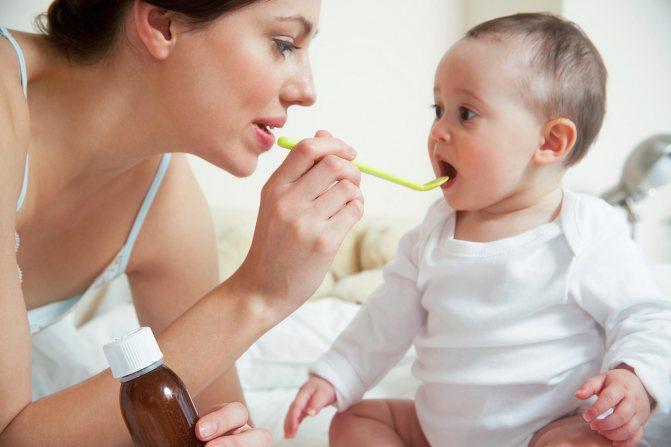
It happens that, as an auxiliary therapy, an orthodox doctor prescribes so-called probiotics for children - products with specially grown cultures of microorganisms, which ideally should colonize their intestines and displace pathogenic bacteria. But it has long been proven that taking probiotics for the treatment of dietary diathesis is inappropriate, since the intestinal microflora is restored on its own if the provoking factor is removed.
As for hormonal ointment, parents are often concerned about its safety for children. Their fears are unfounded - when the product is applied according to the instructions and the prescribed course, systemic side effects are excluded, and it helps the child quite quickly. However, connoisseurs of traditional medicine can turn to its methods to help get rid of diathesis.

If diathesis greatly worries your child, and your home medicine cabinet does not have the necessary medications, try to help him with one of the following folk remedies:

These products can also cause an allergic reaction, so before using them, perform a so-called allergy test:
If it turns red, refuse treatment of diathesis in the method you have chosen. If the appearance of the skin remains unchanged, you can begin the procedure, making sure to check the temperature of the liquid. However, remember that self-medication for children, especially with homemade infusions taken orally, should be temporary, and it is highly advisable that you consult a pediatrician about it.
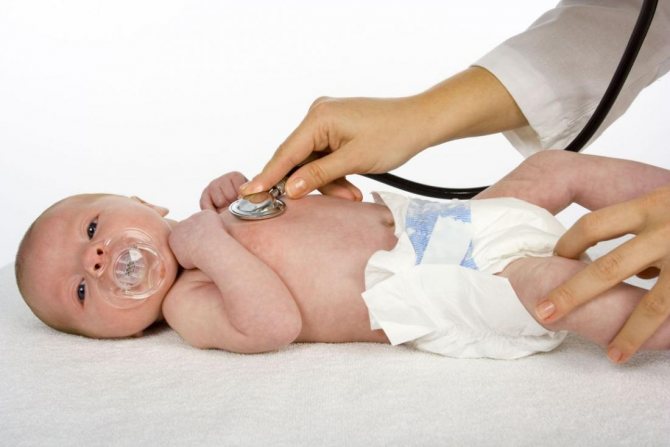
Diagnostics
To improve a child’s condition, pediatricians often advise removing from his diet foods that are considered the most “allergenic”: honey, chocolate, cocoa, caviar, citrus fruits, strawberries, nuts. However, allergies are very individual, and in a particular child they can be caused by foods to which the body of most people does not react. Therefore, if symptoms are present, you should undergo an allergy test, which may include skin testing and/or a blood test for the presence of specific immunoglobulins E.
Diet
Diathesis in children responds well to treatment if the recommended diet is followed. During breastfeeding, the baby's mother should adhere to it. Allergenic foods (sweets, citrus fruits, eggs, honey, etc.) are excluded. During the introduction of complementary foods, in order to avoid the development of diathesis, the baby’s skin reactions to the new product should be monitored, and if signs of illness appear, exclude it for three to five months, until the next attempt. After the introduction of complementary foods, the basis of the menu should be cereals, lean meat and fish, vegetables and fruits. The consumption of sweets and foods high in food additives should be limited as much as possible.
Contact us! Specialists at the PsorMak Skin Diseases Center have been successfully treating diathesis in children for many years. Contact us for an initial consultation, our doctors will help you develop a complete understanding of how to properly treat the disease in the acute stage (with skin rashes). In addition, we will help you create a dietary diet and suggest what other measures to correct the child’s lifestyle should be taken to improve his health and effectively combat the disease. Make an appointment by calling +7 (495) 150-15-14,
Diathesis is a fairly common pathology that occurs in children of all ages. These are constant rashes, itching and a host of other unpleasant symptoms that can lead to more severe consequences. Many parents associate this disease with the food preferences of their children. Although other babies can easily eat anything, use any care products and not experience any discomfort. And all because diathesis can have many causes, as well as ways to treat it.
SOS!
Many parents do not perceive diathesis as a serious problem because they are sure that the child will outgrow it. Unfortunately, this does not always happen - for many, atopic dermatitis, which manifests itself in childhood, persists into adulthood.
Another unpleasant scenario is also possible. In allergology there is such a thing as “atopic march”. Its essence is this. Children prone to allergies usually experience atopic dermatitis in early childhood. Then its manifestations gradually subside, and it seems that the allergy has receded. However, by the age of 5–7 years it makes itself felt again, but not with skin manifestations, but with bronchial asthma, allergic rhinitis (runny nose) or both diseases at once.
Article on the topic
Why is diathesis dangerous? Allergic rhinitis negatively affects the quality of life and study. Complications often arise against this background. Thus, 30% of children suffering from allergic rhinitis are diagnosed with adenoiditis, 30% with frequently recurring otitis media, and 10% with diseases of the larynx, including false croup.
The danger of bronchial asthma, characterized by attacks of suffocation, is obvious. During adolescence, bronchial problems may decrease. However, this does not always happen. Whether the risk of asthma is high largely depends on how severe the manifestations of atopic dermatitis were. According to the results of a long-term study conducted in Germany, about 30% of children with a mild form of dermatitis experience asthma as they grow older, and about 70% with a severe form of dermatitis.
This is why diathesis should never be left to chance; it requires adequate treatment.
Kinds
There are several types of diathesis:
- Allergic (exudative-catarrhal) – allergic reactions, skin inflammation;
- Neuro-arthritic - a tendency to hyperreactivity, hypertension, diabetes, obesity, anorexia, atherosclerosis;
- Lymphatic-hypoplastic – predisposition to infectious, allergic diseases, pathologies of the immune system.
All forms of diathesis appear both in pure and combined forms. When combined, the course of diathesis is much worse and can give rise to the formation of chronic pathology.
Depending on the severity, diathesis is divided into 3 degrees:
- Easy. Some signs appear that do not affect the baby’s health or do so only slightly.
- Average. Complex symptoms develop. The child is more susceptible to concomitant diseases.
- Heavy. A full range of features. Severe concomitant diseases develop. Diathesis lasts a long time and produces consequences in the form of chronic pathologies.
Treatment
For atopic dermatitis, the skin is lubricated with special creams, ointments, “talkers,” and lotions. The purpose of their use is to reduce inflammation, eliminate itching, make the skin more hydrated, and increase its protective properties.
It is important to reduce the child’s contact with allergens, and if a reaction occurs, use antihistamines. In severe cases, as prescribed by a doctor, drugs from the group of glucocorticosteroids are used, including local ones (ointments, creams, etc.).
| Drugs |
| Allergy medications |
Therapy for adults
If you are dealing with a problem such as diathesis, you should consult an allergist, who will select the optimal treatment tactics. To do this, you must first undergo a full examination.
Treatment of diathesis on the hands of adults involves several stages:
- symptomatic therapy - the use of antihistamines to relieve allergy symptoms - these can be immunosuppressants, corticosteroids, ointments;
- elimination therapy - gradual prevention of contact with the pathogen; for this, doctors can use antigens;
- drug therapy;
- the use of folk remedies to speed up the healing process;
- diet correction.
Of course, the best results will come from comprehensive treatment. The doctor will prescribe a therapeutic diet for the patient, prescribe nutritional supplements to normalize metabolism and select the optimal means to strengthen the immune system.
Often, treatment of diathesis on the hands brings an adult to a psychotherapist’s office. And all because this disease can be a consequence of emotional overstrain or severe stress. In this case, the patient needs the help of a specialist, otherwise it will not be possible to get rid of the pathology. Usually, the doctor recommends proper rest and all kinds of entertainment to speed up recovery.
External manifestations of diathesis on the hands can be relieved with the help of special ointments. Gels and creams effectively eliminate itching, flaking and promote accelerated healing.
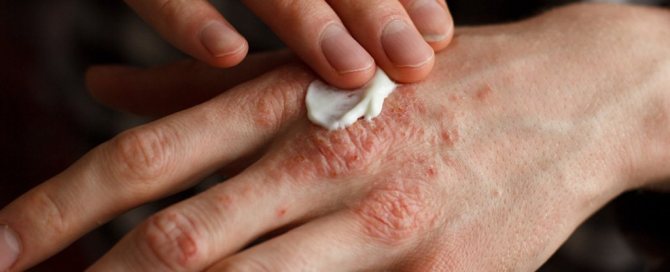
How to apply diathesis on hands:
- “Elidel”, “Protopic” - should be applied to the skin 2 times a day until the dryness completely disappears.
- "Akriderm", "Fenistil" - effectively eliminate itching and allergies.
- "Diprosalik" - improves skin condition and promotes faster healing of wounds.

You can take pills along with external remedies to speed up recovery. For example, doctors often prescribe Zodak, Zyrtec, and Cetrin. You need to take them one tablet before bed. Just keep in mind that pregnant women should not use such drugs.
Memo to parents
- When expanding your child's diet, never introduce two new foods at once.
- When introducing a new product, wait a week. If there is no reaction, you can give the next one.
- If the child is breastfed, the mother needs to exclude salty, spicy, smoked foods from her diet, and sharply limit sugar, chocolate, and honey.
- Children suffering from diathesis need to change diapers and diapers more often. Oilcloths, synthetic and woolen underwear are contraindicated for them. Clothes should be made of soft, breathable fabrics and should not be too tight.
- Since excessive sweat can irritate the skin, you need to monitor your child's physical activity and change his clothes on time.
- For atopic dermatitis, items can only be washed with hypoallergenic powder using an additional rinse mode.
- Article on the topic
Tips for mothers: how to recognize and cure dermatitis in a child You must carefully care for your child’s skin to avoid diaper rash. Baths made from decoctions of medicinal herbs are recommended: string, chamomile, plantain leaves, calamus root, oak bark. They are mixed in equal quantities and brewed in boiling water (1 tablespoon per 1 liter of water). You can also add a solution of potassium permanganate to the bath: it has a drying and antibacterial effect. The crystals are first dissolved in a small amount of water, and this solution is added to the bath until a pale pink color is obtained.
- Make sure that the microclimate in the house is comfortable. It is advisable to maintain a temperature of 20–24 °C and a humidity of at least 40–45%.
- Children suffering from diathesis are more susceptible to colds than their peers who do not have skin problems. Therefore, they must be hardened, they must spend a lot of time outdoors, but during the epidemic season, try to avoid crowded places.
- If exudative diathesis worsens, doctors may waive vaccinations for a period of time until the child goes into remission.
Remember, self-medication is life-threatening; consult a doctor for advice on the use of any medications.
Buy the printed version of the directory at kiosks in your city or order it from the editorial office by phone or email [email protected] with the mark PM (indicate your full name, postal address and telephone number in the letter).
Forecast
In the absence of therapy, complications arise in the form of vitamin deficiency, blood diseases (anemia, leukocytosis), metabolic problems (diabetes, obesity, anorexia), chronic diseases of the gastrointestinal tract (gastritis, urolithiasis, ulcers). There is a tendency to infectious diseases - pneumonia, conjunctivitis.
The prediction will be favorable if treatment is started from the first or the beginning of the second stages. After recovery, a 2-3 year old child will again be able to eat citrus fruits and chocolates.
Pathogenesis
Diathesis during pregnancy is associated with an increase in the concentration of uric acid salts (urates), oxalates (oxalic acid salts) and calcium phosphates in the urine.

These organic compounds themselves are not pathological and are always present in our body. Pathology should be discussed if their concentration increases so much that it leads to the formation of stones. With diathesis, pregnant women do not yet have stones, but all the conditions for their formation have already been created.
Why does the concentration of the above organic salts increase? There are a great many possible causes - these are hereditary tubulopathies (defects of the kidney tubules), which manifest themselves in conditions of increased functional load, and previously suffered inflammatory diseases of the renal pelvis, and peculiarities of nutrition and water regime.
The cause of salt diathesis during pregnancy can be even a minimal disturbance in the outflow of urine, because this leads to disturbances in the processes of resorption and excretion of salts, and they precipitate.
The basis of children's health
If you take timely measures, you can cope with diathesis in a matter of days. However, they are clearly not enough if allergic substances continue to enter the children’s bodies from the environment. If you have no idea where the danger is coming from, work in all directions and first remove potential allergens from food:
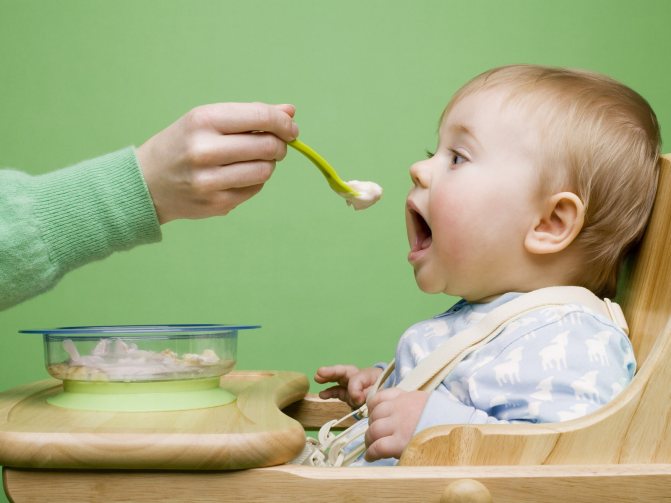
To exclude contact diathesis, the following action plan will help:

Symptoms of diathesis in children intensify if they are hot. Achieve optimal air parameters in the room - no higher than 20 °C and no lower than 50% humidity. Carry out wet cleaning daily, if possible, using a vacuum cleaner with an aqua filter, ventilate, and often walk in the fresh air, and not in a supermarket or entertainment center. Only a natural lifestyle, and not newfangled antiallergic drugs, will help your baby successfully overcome the period of establishing the immune system.
General signs
Diathesis first appears mainly in children whose age has not yet reached one year of age.
The characteristic features of all forms include the following manifestations:
- the cheeks become red and begin to peel off profusely;
- areas appear on the body that get wet profusely due to increased sweating;
- the buttocks, legs, elbows become covered with red spots, and the mucous membranes take on an inflamed appearance;
- As the disease progresses, the spots become redder and become covered with small blisters;
- severe itching appears;
- the baby's head is covered with grayish scales, which is called seborrhea;
- It is not possible to get rid of diaper rash, even if all recommendations are followed.

General recommendations
Treatment of diathesis can be accelerated by creating special conditions.
- Air baths are of great benefit. They are carried out daily.
- It is necessary to monitor the child’s routine and give his body a break from diapers.
- After bowel movements, be sure to wash the child with soap and wipe the skin dry.
- You need to bathe your baby every day.
- You can't wrap up a child. Otherwise, he will begin to sweat, overheat, and air circulation will be disrupted. All this leads to overheating and other problems.
- Wash linen and clothes only with baby laundry detergent.
- For children, clothing and bedding are selected only from materials that do not cause allergies.
- If the baby is bottle-fed, then he needs to replace the formula with a hypoallergenic one.
